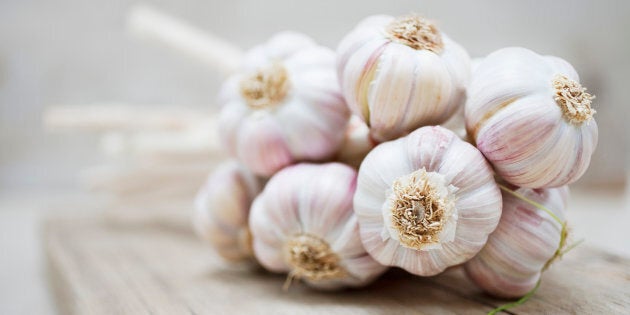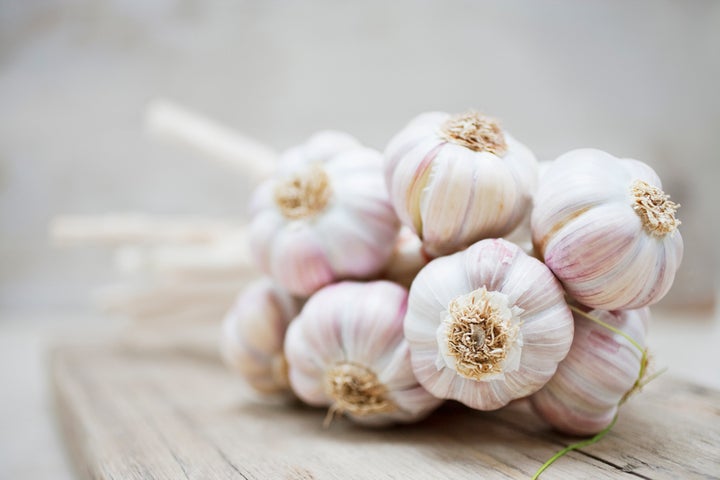

Lingering bad breath is the price many food lovers are willing to pay for treats like pesto, shrimp scampi and ramen. But for those who want a quick and easy solution to rid themselves of that garlicky taste and smell ― which can last for as long as 24 hours after eating certain foods ― there’s a quick and easy garlic breath remedy.
Munching on apples, lettuce and mint leaves can help significantly decrease the levels of odiferous compounds in your breath, according to a tiny but compelling experiment by researchers at Ohio State University. Specifically, certain compounds and enzymes in raw apple, raw lettuce, and mint leaves react with the chemicals that create garlic breath, neutralizing the odor.
It’s better than mouthwash
Garlic breath can come from multiple places in the body ― not just food particles in your mouth. Partially digested food in your stomach also emits the smell, so brushing your teeth or gargling with mouthwash won’t always do the trick. By contrast, the neutralizing foods identified by the study interact with the garlic in the stomach to deodorize the vapors, preventing the garlicky compounds from making it to your bloodstream and being expressed from your lungs into the air you exhale.
“[Brushing teeth] has no effect on what you have already swallowed or digested,” explained lead researcher Sheryl Barringer, a professor and chair of OSU’s Department of Food Science and Technology. “An apple reacts with the garlic in your mouth or stomach to deodorize the volatiles in your stomach, before they are digested into your bloodstream. So yes, [eating] the apple is more effective than just brushing your teeth.”
To test the effects of certain foods on garlic breath, study co-author Rita Mirondo first chewed one clove of raw garlic for 25 seconds (yikes!) and then chased it with cool water that served as the control treatment. Mirondo then repeated the garlic-chewing over the course of several days, each day testing the effect of just one food or drink on her garlic breath. She tried raw and microwaved apples, raw and microwaved lettuce, mint leaves, mint juice and hot green tea.
The researchers then measured the level of garlic compounds in Mirondo’s breath for sixty minutes after each bad breath treatment, and then ranked the foods and juices according to how quickly they helped decrease the garlic vapors. They found that raw apple, raw lettuce and mint leaves were the most effective at significantly decreasing the levels of most vapors that cause garlic breath.
Why garlicky foods need a specific chaser
Apples, lettuce and mint leaves are all high in phenolic compounds, aromatic chemicals found in plants that react directly with the compounds that create garlic breath. The foods are also high in the enzyme polyphenol oxidase, which causes browning in fruits and vegetables, and reductase, which helps catalyze the breakdown of organic compounds. Both enzymes are thought to speed up the reaction between the phenolic compounds and the garlic vapors.
Apple juice, mint juice, heated apple and heated lettuce also significantly decreased the levels of garlic vapors in the breath, though they weren’t as effective as the raw versions.
“The cooked and the raw were similar, but it’s just that the raw [foods] have more enzymes which help speed up the process,” said Barringer. “But certainly, eating an apple or drinking mint tea at the end of the meal would be a good deodorizer.”
Of course, because this experiment was so small, the results would have to be replicated across many more garlic breath victims. But because mint in particular was such an effective way of neutralizing the garlic smell in Mirondo’s breath, Barringer next plans to test different types and amounts of mint to pinpoint the properties that make the herb so good at fighting garlic breath.
Barringer’s research was published in the Journal of Food Science.
